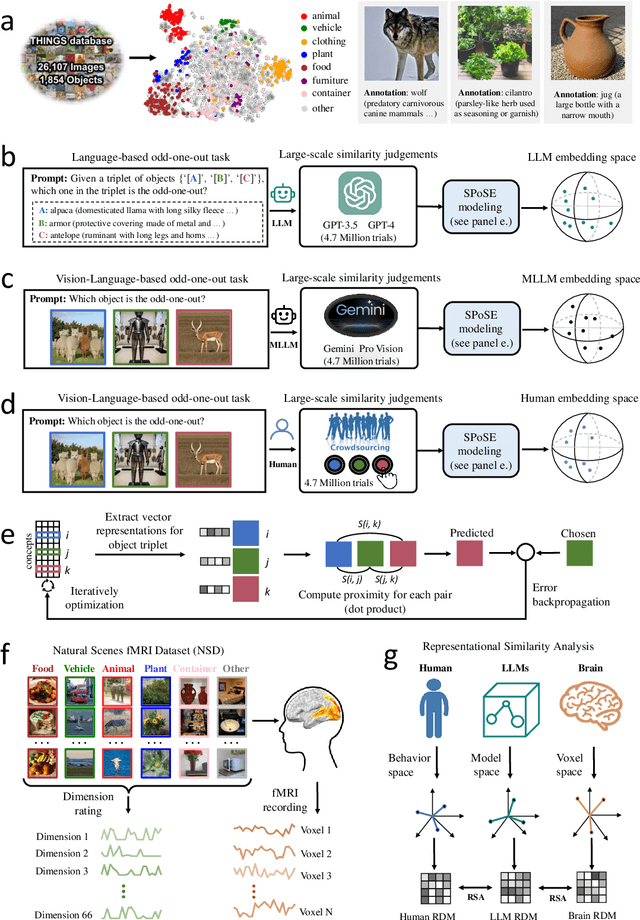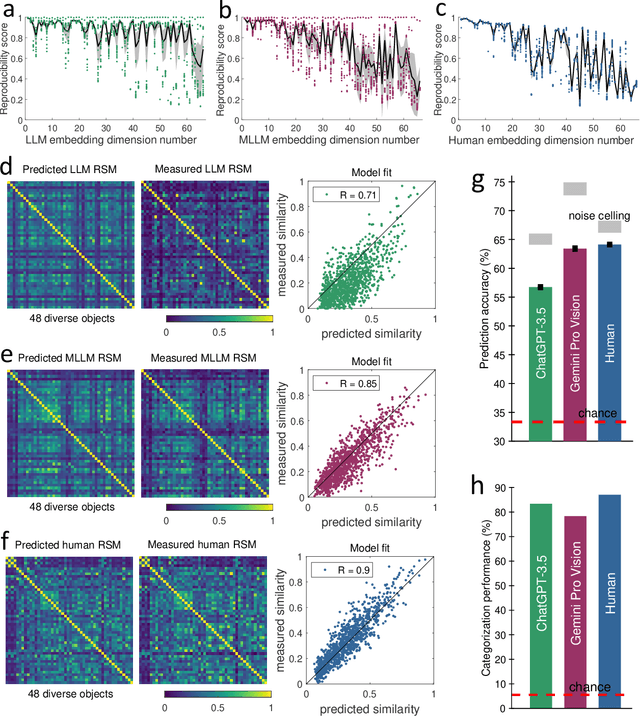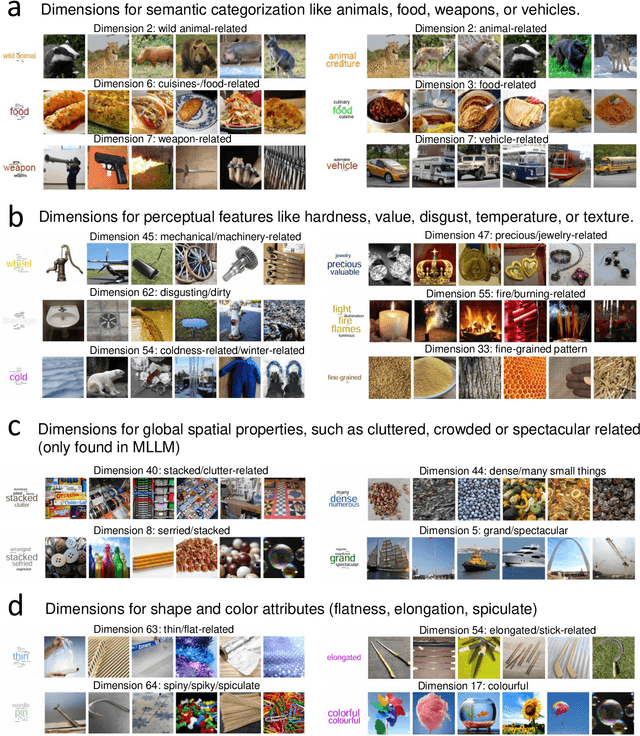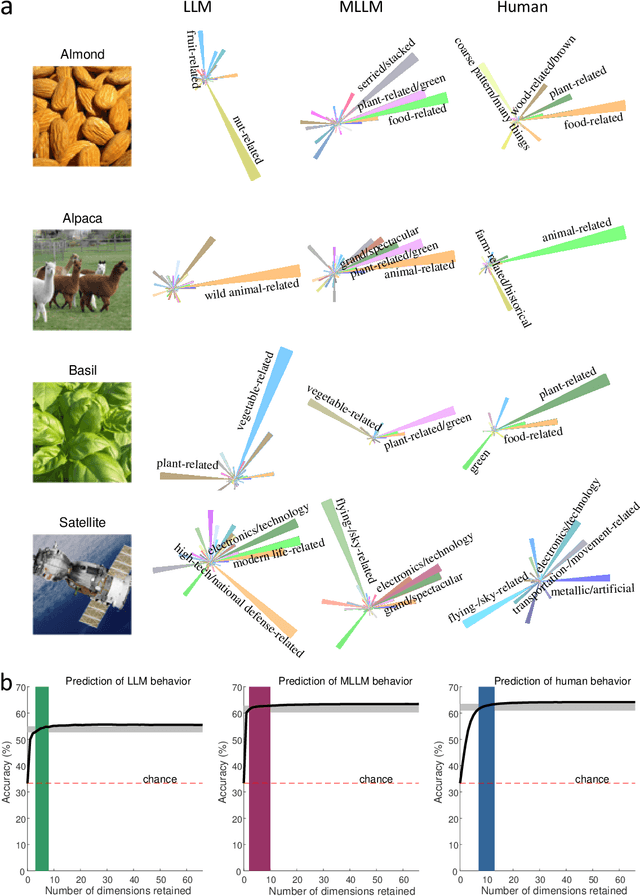Yi Sun
IDSIA
Closing the Safety Gap: Surgical Concept Erasure in Visual Autoregressive Models
Sep 26, 2025Abstract:The rapid progress of visual autoregressive (VAR) models has brought new opportunities for text-to-image generation, but also heightened safety concerns. Existing concept erasure techniques, primarily designed for diffusion models, fail to generalize to VARs due to their next-scale token prediction paradigm. In this paper, we first propose a novel VAR Erasure framework VARE that enables stable concept erasure in VAR models by leveraging auxiliary visual tokens to reduce fine-tuning intensity. Building upon this, we introduce S-VARE, a novel and effective concept erasure method designed for VAR, which incorporates a filtered cross entropy loss to precisely identify and minimally adjust unsafe visual tokens, along with a preservation loss to maintain semantic fidelity, addressing the issues such as language drift and reduced diversity introduce by na\"ive fine-tuning. Extensive experiments demonstrate that our approach achieves surgical concept erasure while preserving generation quality, thereby closing the safety gap in autoregressive text-to-image generation by earlier methods.
IEFS-GMB: Gradient Memory Bank-Guided Feature Selection Based on Information Entropy for EEG Classification of Neurological Disorders
Sep 18, 2025Abstract:Deep learning-based EEG classification is crucial for the automated detection of neurological disorders, improving diagnostic accuracy and enabling early intervention. However, the low signal-to-noise ratio of EEG signals limits model performance, making feature selection (FS) vital for optimizing representations learned by neural network encoders. Existing FS methods are seldom designed specifically for EEG diagnosis; many are architecture-dependent and lack interpretability, limiting their applicability. Moreover, most rely on single-iteration data, resulting in limited robustness to variability. To address these issues, we propose IEFS-GMB, an Information Entropy-based Feature Selection method guided by a Gradient Memory Bank. This approach constructs a dynamic memory bank storing historical gradients, computes feature importance via information entropy, and applies entropy-based weighting to select informative EEG features. Experiments on four public neurological disease datasets show that encoders enhanced with IEFS-GMB achieve accuracy improvements of 0.64% to 6.45% over baseline models. The method also outperforms four competing FS techniques and improves model interpretability, supporting its practical use in clinical settings.
BudgetThinker: Empowering Budget-aware LLM Reasoning with Control Tokens
Aug 24, 2025Abstract:Recent advancements in Large Language Models (LLMs) have leveraged increased test-time computation to enhance reasoning capabilities, a strategy that, while effective, incurs significant latency and resource costs, limiting their applicability in real-world time-constrained or cost-sensitive scenarios. This paper introduces BudgetThinker, a novel framework designed to empower LLMs with budget-aware reasoning, enabling precise control over the length of their thought processes. We propose a methodology that periodically inserts special control tokens during inference to continuously inform the model of its remaining token budget. This approach is coupled with a comprehensive two-stage training pipeline, beginning with Supervised Fine-Tuning (SFT) to familiarize the model with budget constraints, followed by a curriculum-based Reinforcement Learning (RL) phase that utilizes a length-aware reward function to optimize for both accuracy and budget adherence. We demonstrate that BudgetThinker significantly surpasses strong baselines in maintaining performance across a variety of reasoning budgets on challenging mathematical benchmarks. Our method provides a scalable and effective solution for developing efficient and controllable LLM reasoning, making advanced models more practical for deployment in resource-constrained and real-time environments.
Time's Up! An Empirical Study of LLM Reasoning Ability Under Output Length Constraint
Apr 22, 2025Abstract:Recent work has demonstrated the remarkable potential of Large Language Models (LLMs) in test-time scaling. By making the models think before answering, they are able to achieve much higher accuracy with extra inference computation. However, in many real-world scenarios, models are used under time constraints, where an answer should be given to the user within a certain output length. It is unclear whether and how the reasoning abilities of LLMs remain effective under such constraints. We take a first look at this problem by conducting an in-depth empirical study. Specifically, we test more than 25 LLMs on common reasoning datasets under a wide range of output length budgets, and we analyze the correlation between the inference accuracy and various properties including model type, model size, prompt style, etc. We also consider the mappings between the token budgets and the actual on-device latency budgets. The results have demonstrated several interesting findings regarding the budget-aware LLM reasoning that differ from the unconstrained situation, e.g. the optimal choices of model sizes and prompts change under different budgets. These findings offer practical guidance for users to deploy LLMs under real-world latency constraints.
ChainStream: An LLM-based Framework for Unified Synthetic Sensing
Dec 13, 2024Abstract:Many applications demand context sensing to offer personalized and timely services. Yet, developing sensing programs can be challenging for developers and using them is privacy-concerning for end-users. In this paper, we propose to use natural language as the unified interface to process personal data and sense user context, which can effectively ease app development and make the data pipeline more transparent. Our work is inspired by large language models (LLMs) and other generative models, while directly applying them does not solve the problem - letting the model directly process the data cannot handle complex sensing requests and letting the model write the data processing program suffers error-prone code generation. We address the problem with 1) a unified data processing framework that makes context-sensing programs simpler and 2) a feedback-guided query optimizer that makes data query more informative. To evaluate the performance of natural language-based context sensing, we create a benchmark that contains 133 context sensing tasks. Extensive evaluation has shown that our approach is able to automatically solve the context-sensing tasks efficiently and precisely. The code is opensourced at https://github.com/MobileLLM/ChainStream.
LV-CadeNet: Long View Feature Convolution-Attention Fusion Encoder-Decoder Network for Clinical MEG Spike Detection
Dec 12, 2024



Abstract:It is widely acknowledged that the epileptic foci can be pinpointed by source localizing interictal epileptic discharges (IEDs) via Magnetoencephalography (MEG). However, manual detection of IEDs, which appear as spikes in MEG data, is extremely labor intensive and requires considerable professional expertise, limiting the broader adoption of MEG technology. Numerous studies have focused on automatic detection of MEG spikes to overcome this challenge, but these efforts often validate their models on synthetic datasets with balanced positive and negative samples. In contrast, clinical MEG data is highly imbalanced, raising doubts on the real-world efficacy of these models. To address this issue, we introduce LV-CadeNet, a Long View feature Convolution-Attention fusion Encoder-Decoder Network, designed for automatic MEG spike detection in real-world clinical scenarios. Beyond addressing the disparity between training data distribution and clinical test data through semi-supervised learning, our approach also mimics human specialists by constructing long view morphological input data. Moreover, we propose an advanced convolution-attention module to extract temporal and spatial features from the input data. LV-CadeNet significantly improves the accuracy of MEG spike detection, boosting it from 42.31\% to 54.88\% on a novel clinical dataset sourced from Sanbo Brain Hospital Capital Medical University. This dataset, characterized by a highly imbalanced distribution of positive and negative samples, accurately represents real-world clinical scenarios.
CoActionGraphRec: Sequential Multi-Interest Recommendations Using Co-Action Graphs
Oct 15, 2024



Abstract:There are unique challenges to developing item recommender systems for e-commerce platforms like eBay due to sparse data and diverse user interests. While rich user-item interactions are important, eBay's data sparsity exceeds other e-commerce sites by an order of magnitude. To address this challenge, we propose CoActionGraphRec (CAGR), a text based two-tower deep learning model (Item Tower and User Tower) utilizing co-action graph layers. In order to enhance user and item representations, a graph-based solution tailored to eBay's environment is utilized. For the Item Tower, we represent each item using its co-action items to capture collaborative signals in a co-action graph that is fully leveraged by the graph neural network component. For the User Tower, we build a fully connected graph of each user's behavior sequence, with edges encoding pairwise relationships. Furthermore, an explicit interaction module learns representations capturing behavior interactions. Extensive offline and online A/B test experiments demonstrate the effectiveness of our proposed approach and results show improved performance over state-of-the-art methods on key metrics.
Behavior evolution-inspired approach to walking gait reinforcement training for quadruped robots
Sep 25, 2024



Abstract:Reinforcement learning method is extremely competitive in gait generation techniques for quadrupedal robot, which is mainly due to the fact that stochastic exploration in reinforcement training is beneficial to achieve an autonomous gait. Nevertheless, although incremental reinforcement learning is employed to improve training success and movement smoothness by relying on the continuity inherent during limb movements, challenges remain in adapting gait policy to diverse terrain and external disturbance. Inspired by the association between reinforcement learning and the evolution of animal motion behavior, a self-improvement mechanism for reference gait is introduced in this paper to enable incremental learning of action and self-improvement of reference action together to imitate the evolution of animal motion behavior. Further, a new framework for reinforcement training of quadruped gait is proposed. In this framework, genetic algorithm is specifically adopted to perform global probabilistic search for the initial value of the arbitrary foot trajectory to update the reference trajectory with better fitness. Subsequently, the improved reference gait is used for incremental reinforcement learning of gait. The above process is repeatedly and alternatively executed to finally train the gait policy. The analysis considering terrain, model dimensions, and locomotion condition is presented in detail based on simulation, and the results show that the framework is significantly more adaptive to terrain compared to regular incremental reinforcement learning.
The Family of LML Detectors and the Family of LAS Detectors for Massive MIMO Communications
Jul 29, 2024Abstract:The family of local maximum likelihood (LML) detectors and the family of likelihood ascent search (LAS) detectors are successfully applied to symbol detection in massive multi-input multi-output (MIMO) communications and demonstrate performance approaching the NP-hard global maximum likelihood (GML) detector. The LML and LAS detectors in the two families are akin to each other and possess common properties significant in both theory and practical MIMO communications. This book chapter reviews the LML and LAS detectors in a unified framework. The focus is on their formulation, relationships, properties, and GML performance in bit error rate (BER) and spectral efficiency in large MIMO channels.
Human-like object concept representations emerge naturally in multimodal large language models
Jul 01, 2024



Abstract:The conceptualization and categorization of natural objects in the human mind have long intrigued cognitive scientists and neuroscientists, offering crucial insights into human perception and cognition. Recently, the rapid development of Large Language Models (LLMs) has raised the attractive question of whether these models can also develop human-like object representations through exposure to vast amounts of linguistic and multimodal data. In this study, we combined behavioral and neuroimaging analysis methods to uncover how the object concept representations in LLMs correlate with those of humans. By collecting large-scale datasets of 4.7 million triplet judgments from LLM and Multimodal LLM (MLLM), we were able to derive low-dimensional embeddings that capture the underlying similarity structure of 1,854 natural objects. The resulting 66-dimensional embeddings were found to be highly stable and predictive, and exhibited semantic clustering akin to human mental representations. Interestingly, the interpretability of the dimensions underlying these embeddings suggests that LLM and MLLM have developed human-like conceptual representations of natural objects. Further analysis demonstrated strong alignment between the identified model embeddings and neural activity patterns in many functionally defined brain ROIs (e.g., EBA, PPA, RSC and FFA). This provides compelling evidence that the object representations in LLMs, while not identical to those in the human, share fundamental commonalities that reflect key schemas of human conceptual knowledge. This study advances our understanding of machine intelligence and informs the development of more human-like artificial cognitive systems.
 Add to Chrome
Add to Chrome Add to Firefox
Add to Firefox Add to Edge
Add to Edge